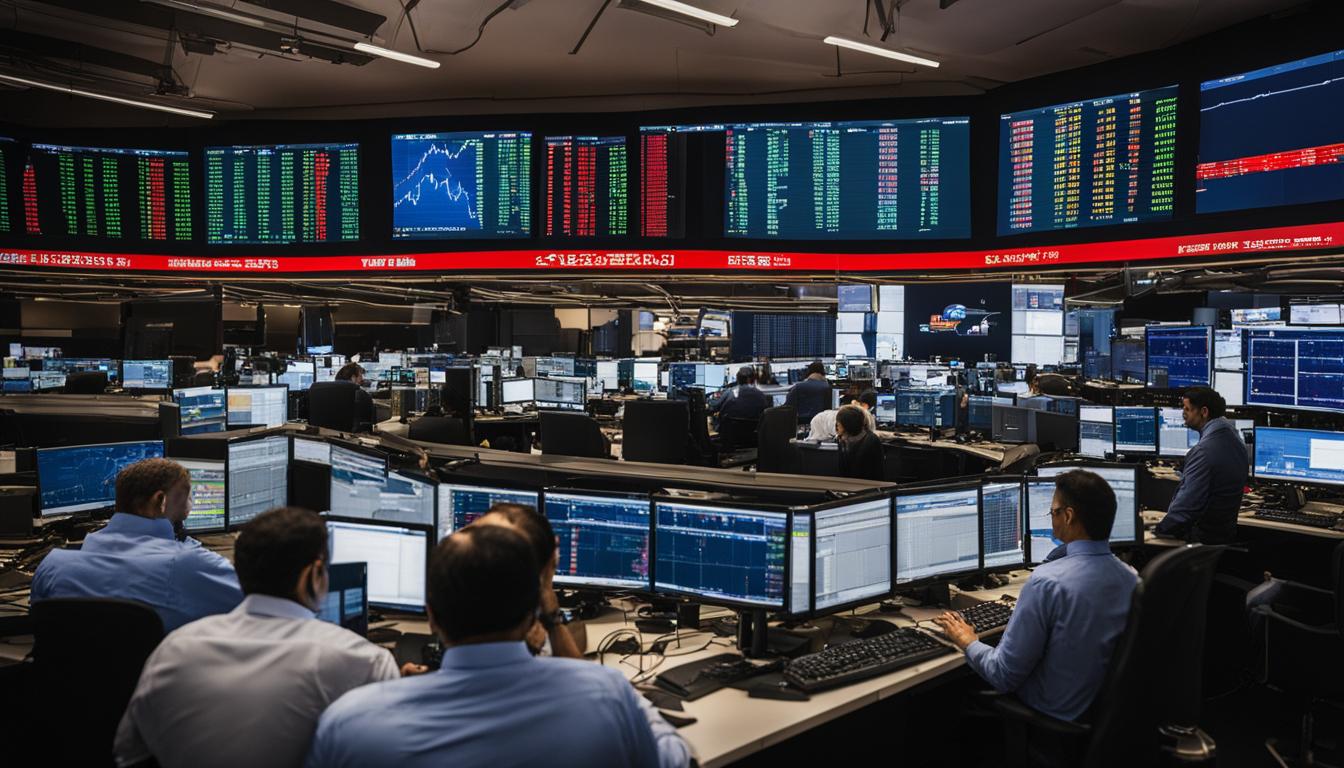Exploring the Link Between Implied Volatility and Option Moneyness

Introduction
Understanding the relationship between implied volatility (IV) and option moneyness is crucial for anyone involved in options trading. Implied volatility represents the market’s expectations of future price movements of an underlying asset. It can significantly impact the pricing and attractiveness of options contracts.
Moneyness refers to the intrinsic value of an option relative to the current price of the underlying asset. Options can be categorized as:
- In-the-money (ITM)
- At-the-money (ATM)
- Out-of-the-money (OTM)
For options traders, comprehending how IV interacts with these moneyness categories is vital. This relationship influences not only the price but also the strategic decisions you make when trading options.
Why It Matters
Grasping this concept allows you to:
- Better anticipate market movements
- Optimize entry and exit points
- Enhance your risk management strategies
Key takeaway for medium-experienced traders: Leveraging knowledge about implied volatility and moneyness can refine your trading strategies, giving you a competitive edge in predicting option price changes and market behavior.
Understanding Implied Volatility and Option Moneyness
Understanding implied volatility (IV) is foundational for any options trader. Implied volatility represents the market’s forecast of a likely movement in an asset’s price. This metric is forward-looking, reflecting current market sentiment and conditions. Higher implied volatility indicates larger expected price swings, affecting both call and put option prices.
Option moneyness refers to the intrinsic value of an option relative to the current price of the underlying asset. Options can be categorized into three types:
- In-the-Money (ITM): Options with intrinsic value; for calls, when the underlying asset’s price is above the strike price; for puts, when it’s below.
- At-the-Money (ATM): Options where the underlying asset’s price is approximately equal to the strike price.
- Out-of-the-Money (OTM): Options without intrinsic value; for calls, when the underlying asset’s price is below the strike price; for puts, when it’s above.
The relationship between implied volatility and option moneyness is crucial in options pricing. Traders often visualize this relationship using a volatility smile, which shows that deep ITM and OTM options generally have higher implied volatility compared to ATM options. This pattern emerges due to perceived higher uncertainty for options far from being ATM.
Understanding these concepts equips you with better insights into market movements and helps refine your trading strategies, leveraging the dynamics between IV and moneyness effectively.
Analyzing the Impact Through Case Studies
Real-world examples provide invaluable insights into the practical implications of implied volatility and option moneyness. Studying case studies on implied volatility and moneyness allows you to see how theoretical concepts play out in actual trading scenarios, enhancing your understanding and strategy development.

How Case Studies Help
Examining specific cases helps:
- Highlight market behaviors: Observe how different market conditions influence implied volatility and option pricing.
- Understand trader reactions: Learn how traders adjust their strategies based on changes in implied volatility and moneyness.
- Identify patterns: Spot recurring trends that can inform future trading decisions.
Through these case studies, you’ll gain a deeper appreciation for the dynamic relationship between implied volatility and option moneyness. This knowledge equips you to make more informed trading decisions, tailoring your strategies to exploit market inefficiencies effectively.
Case Study 1: Earnings Announcement Effect on ITM vs. OTM Options
Overview of the Case Study Scenario and Companies Involved
Earnings announcements are pivotal events in the financial markets, often leading to significant price movements in the underlying stocks. This case study examines how implied volatility (IV) influences the pricing of in-the-money (ITM) and out-of-the-money (OTM) options during such announcements. The companies involved include well-known tech giants like Apple Inc. (AAPL) and Amazon.com Inc. (AMZN), both of which have a history of sharp movements around their earnings reports.
Interpreting the Results
Apple Inc. (AAPL):
During a recent earnings announcement, AAPL experienced a surge in IV leading up to the event. Both ITM and OTM options saw increased premiums due to heightened market expectations. Post-announcement, the stock price soared, significantly benefiting holders of ITM call options.
Amazon.com Inc. (AMZN):
Similar dynamics were observed for AMZN, where IV spiked before the earnings release. However, after delivering mixed results, AMZN’s stock price became volatile but didn’t trend strongly in one direction. This scenario led to different outcomes for ITM and OTM options.
Discussion on How Implied Volatility Influenced Price Movement of ITM and OTM Options
Earnings announcements typically cause a pre-event surge in IV as traders anticipate potential price swings. Here’s how this affects ITM and OTM options differently:
Impact on ITM Options:
- Higher Premiums: ITM options usually have intrinsic value already built in. When IV increases, these options become more expensive due to their higher likelihood of ending up profitable.
- Greater Sensitivity: Since ITM options are closer to having intrinsic value realized, they exhibit greater sensitivity to changes in IV. For instance, an AAPL call option with a strike price close to its current trading level saw a significant premium increase as IV rose pre-announcement.
- Post-Event Stabilization: After an announcement when uncertainty resolves, IV often drops sharply—a phenomenon known as ‘volatility crush.’ For ITM options that remain profitable post-event, this drop can lead to reduced premiums but still holds substantial intrinsic value.
Impact on OTM Options:
- Speculative Nature: OTM options are primarily influenced by speculative trading ahead of earnings announcements. Traders buy these options betting on large price movements that would push them into profitability.
- Volatility Premiums: The pre-event spike in IV leads to higher premiums even for deep OTM options. An AMZN put option with a far-out strike saw inflated prices purely based on expected volatility.
- Riskier Bets: After the earnings release, if the anticipated move doesn’t materialize or is less than expected, these OTM options can quickly lose value due to the immediate drop in IV and lack of intrinsic value realization.
Real-world examples from AAPL and AMZN highlight how understanding the relationship between implied volatility and option moneyness can guide your trading strategies during such events. By analyzing historical data and current market sentiment leading up to earnings announcements, you can better position yourself whether opting for ITM or OTM options.
Case Study 2: Market Crisis Strategies – Leveraging IV Skew in Trading Spreads
Overview of the Case Study
During significant market downturns, implied volatility (IV) often spikes due to heightened uncertainty and fear among market participants. One notable example is the 2008 financial crisis when market volatility reached unprecedented levels. In this scenario, we examine how traders could capitalize on the implied volatility skew (IV skew) through targeted spread strategies.
In times of market crises, IV skew becomes pronounced as deep out-of-the-money (OTM) puts experience a sharp increase in implied volatility relative to at-the-money (ATM) options. This phenomenon occurs because traders demand higher premiums for protective puts, anticipating drastic downward moves in stock prices.
Interpreting the Results
- IV Surge: During the 2008 financial crisis, the CBOE Volatility Index (VIX), which measures market expectations of near-term volatility conveyed by S&P 500 stock index option prices, surged from around 20 to over 80.
- Skew Pattern: A significant divergence was observed between the implied volatilities of OTM puts and ATM options. For instance, while ATM options might have had an IV of 60%, OTM puts saw IVs reaching up to 100%.
- Spread Opportunities: The pronounced skew presented unique opportunities for traders to implement spread strategies that capitalize on these discrepancies.
Capitalizing on IV Skew Through Spread Strategies
1. Vertical Put Spreads
- Setup: Buy a higher strike put and sell a lower strike put within the same expiration.
- Objective: Profit from the elevated IV in OTM puts while limiting risk exposure.
- Example: If a trader buys a $50 strike put and sells a $40 strike put during a crisis, they benefit from the high premium on the $40 strike due to increased IV.
2. Calendar Spreads
- Setup: Buy a longer-dated option and sell a shorter-dated option at the same strike price.
- Objective: Take advantage of differences in IV across different maturities.
- Example: A trader might buy a six-month $100 strike call and sell a one-month $100 strike call. The strategy profits if short-term IV decreases faster than long-term IV.
3. Ratio Spreads
- Setup: Buy one option and sell multiple options at different strikes but within the same expiration.
- Objective: Leverage extreme IV skew by selling more contracts with inflated premiums.
- Example: Purchasing one $120 strike call while selling two $130 strike calls can be profitable if OTM calls have inflated IV.
4. Butterfly Spreads
- Setup: Buy one ITM option, sell two ATM options, and buy one OTM option.
- Objective: Minimize risk while capitalizing on greater movements near the center strikes.
- Example: Buying a $90 put, selling two $100 puts, and buying a $110 put captures profit from mid-range price movements with limited downside risk.
Understanding how market crises influence implied volatility skews allows you to strategically deploy spreads that take advantage of these conditions. By carefully selecting your spread strategy based on current market dynamics and anticipated movements, you can enhance profitability even amidst heightened uncertainty.
Case Study 3: Event-Driven IV Contraction and its Impact on Volatility Crush Strategies
Overview of the Case Study
An event-driven implied volatility (IV) contraction often occurs following significant announcements or events. One prominent example is the FDA approval process for a biotech stock, which tends to create substantial price movement based on the approval outcome.
Consider a hypothetical biotech company, BioTech Corp. As the FDA decision date for its groundbreaking drug approaches, traders speculate extensively, driving up the implied volatility of BioTech Corp’s options. This heightened IV reflects market uncertainty and the potential for significant price swings post-announcement.
Interpreting the Results
Once the FDA announces its decision—whether it’s an approval or denial—the uncertainty dissipates. This resolution leads to a sharp contraction in implied volatility, often referred to as a volatility crush. The options’ prices adjust accordingly:
- Pre-event: High IV results in inflated option premiums due to anticipated large price movements.
- Post-event: IV plummets as the event passes and uncertainty resolves, reducing option premiums dramatically.
Utilizing Volatility Crush Strategies
Traders can leverage this predictable pattern through volatility crush strategies:
- Straddles and Strangles: These neutral strategies involve buying both call and put options at different strike prices (strangle) or at-the-money strikes (straddle). Prior to the event, high IV inflates both legs of these trades. After the announcement, regardless of price direction, both options tend to lose value due to collapsing IV.
- Iron Condors: This strategy involves selling an OTM call and put while buying further OTM call and put options to limit risk. Pre-event high IV inflates premiums collected from selling options. Post-event IV contraction benefits this strategy as sold options lose value more rapidly than bought options.
- Calendar Spreads: Involves buying a long-term option and selling a short-term option with the same strike price. The short-term option benefits from high pre-event IV while long-term positions are less affected by immediate volatility changes.
These strategies can be particularly useful in sectors like tech and healthcare where significant events drive price fluctuations.
Example Application:
Before the FDA announcement for BioTech Corp’s new drug:
- Buy a straddle with strike prices centered around current stock price.
- Alternatively, sell an iron condor with strikes set broader than expected price move range.
After the FDA decision:
- Close positions to capture profit from premium decay post-volatility crush.
Understanding how implied volatility contraction impacts trading strategies during event-driven scenarios empowers traders to exploit known market behaviors effectively.
Key Considerations for Options Traders
When navigating the complex world of options trading, it’s important to understand how implied volatility (IV) and option moneyness are related. This knowledge can be a game-changer for your trading approach. Here are some key things to keep in mind:
Selecting Strategies Based on IV and Moneyness
- High IV Scenarios:
- For options that are already in the money (ITM), you might want to consider using protective puts as a way to hedge against potential downside.
- On the other hand, if you’re dealing with out-of-the-money (OTM) options, strategies like straddles or strangles could be more effective in capturing profits from significant price movements.
- Low IV Scenarios:
- When implied volatility is low, it may be a good time to explore strategies such as covered calls or cash-secured puts for at-the-money (ATM) options. These strategies can take advantage of lower premiums.
- For options that are deep ITM or OTM, iron condors might be worth considering. This strategy aims to exploit the relatively calm market conditions by targeting narrow trading ranges.
Insights for Medium-Experienced Traders
- Understanding Vega: Vega is a measure of how much an option’s price is expected to change in response to a 1% change in implied volatility. Options that are ATM typically have higher Vega compared to ITM or OTM options, making them more sensitive to shifts in market sentiment.
- Recognizing the Volatility Smile: The volatility smile refers to the phenomenon where options with different strike prices but the same expiration date can have varying implied volatilities. In general, deep ITM and OTM options tend to have higher IV compared to ATM options. This understanding can influence your pricing analysis and strategy selection.
- Adapting to Market Conditions: It’s important to be aware of how market conditions can impact implied volatility. During times of heightened uncertainty or financial crises, IV tends to spike. In these situations, strategies like ratio spreads or backspreads could be useful in managing risk and navigating volatile markets.
By incorporating these key considerations into your options trading approach, you’ll be better equipped to make informed decisions and effectively manage your risk.
Navigating Changing Market Dynamics
Adapting your trading approach to different market conditions is crucial. Market crises, earnings announcements, and varying volatility environments can significantly impact implied volatility (IV) and option moneyness.
Market Crises:
During periods of market stress, implied volatility typically spikes due to increased uncertainty. Here’s what you can do:
- Consider strategies such as buying options to benefit from the heightened IV or selling options if you anticipate a reversion once the crisis subsides.
- Example: During a market downturn, put options often become more expensive due to increased demand for downside protection.
Earnings Announcements:
Earnings reports can lead to sharp movements in stock prices, causing temporary spikes in IV. Here’s how you can navigate this situation:
- Traders might use straddles or strangles to capitalize on anticipated price swings without predicting direction.
- Post-announcement, IV usually drops sharply—a phenomenon known as a “volatility crush.”
Volatility Environments:
Different volatility levels require different strategies. Here are some examples:
- In stable markets with low volatility, strategies like covered calls or cash-secured puts can generate income.
- High-volatility environments may call for protective strategies such as buying puts or using spreads to limit risk.
Understanding how different scenarios affect IV and moneyness allows you to tailor your strategy effectively. By staying flexible and responsive to market conditions, you can better manage risk and optimize your trading outcomes.
When it comes to navigating these changing dynamics, it’s worth exploring the best options strategies to trade market volatility. This resource provides valuable insights into additional strategies that can enhance your trading approach.
Conclusion
Studying the relationship between implied volatility (IV) and option moneyness can greatly improve your trading strategies. It’s important to understand how IV impacts different types of options when making trading decisions.
Encouragement for Practical Application:
- Real Options Trading: Incorporate these insights into your actual trading scenarios. By understanding how IV varies across in-the-money (ITM), at-the-money (ATM), and out-of-the-money (OTM) options, you can better anticipate price movements.
- Risk Management: Always prioritize risk management. The interaction between IV and moneyness can bring different levels of risk, which requires careful monitoring and adjustment of your positions.
- Ongoing Learning: The market is always changing, so continuous learning is essential. Stay updated with market conditions and adjust your strategies accordingly.
Understanding the effects of implied volatility on trading can lead to smarter decision-making and potentially higher returns. Embrace these concepts, practice diligently, and adapt your approach as the market conditions change.







